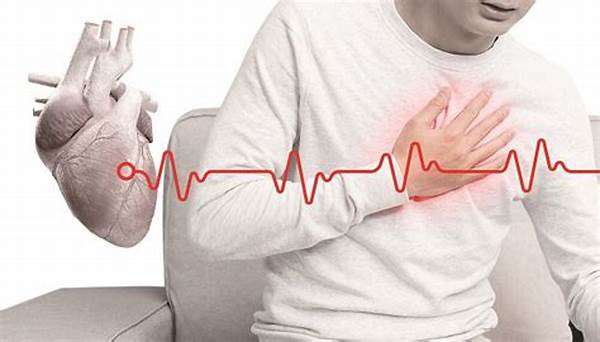Heart failure is a complex and multifaceted condition characterized by the heart’s inability to pump blood effectively to meet the body’s needs. Diagnosing heart failure accurately is crucial for appropriate treatment and management. However, various conditions can present with symptoms similar to heart failure, leading to potential misdiagnosis. In this article, we will explore the conditions that are commonly mistaken for heart failure, delve into their symptoms, and discuss the importance of accurate diagnosis to ensure effective treatment.
1. Chronic Obstructive Pulmonary Disease (COPD)
Chronic Obstructive Pulmonary Disease (COPD) is a progressive lung disease primarily caused by long-term exposure to irritating gases or particulate matter. The condition is characterized by persistent respiratory symptoms, including chronic cough, sputum production, and dyspnea.
Symptoms Overlap:
Shortness of Breath: Both COPD and heart failure can cause significant shortness of breath. In COPD, this is usually related to airway obstruction and impaired gas exchange.
Fatigue: Fatigue is common in both conditions due to decreased oxygenation and overall poor cardiovascular function.
Edema: While edema in COPD is generally less pronounced than in heart failure, it can still be present due to right-sided heart strain caused by severe lung disease.
Differentiation:
Spirometry Testing: COPD is diagnosed through spirometry, which measures lung function and can identify obstruction.
Chest X-ray/CT Scan: Imaging studies can help distinguish between lung changes associated with COPD and fluid accumulation typical of heart failure.
2. Pulmonary Embolism (PE)
Pulmonary Embolism occurs when a blood clot or other material obstructs a pulmonary artery, leading to reduced blood flow to the lungs. This condition can present acutely and may be life-threatening.
SEE ALSO: Which Is A Cerebrovascular Manifestation of Heart Failure?
Symptoms Overlap:
Sudden Shortness of Breath: PE and heart failure can both cause sudden or worsening dyspnea.
Chest Pain: Both conditions can lead to chest discomfort or pain, which can sometimes be sharp and pleuritic.
Differentiation:
D-dimer Test: Elevated levels of D-dimer, a blood marker of clot degradation, can indicate the presence of a PE.
CT Pulmonary Angiography: This imaging test provides detailed pictures of the blood vessels in the lungs and can help diagnose or rule out PE.
3. Asthma
Asthma is a chronic inflammatory disease of the airways characterized by bronchial hyperreactivity and airflow obstruction.
Symptoms Overlap:
Wheezing and Shortness of Breath: Both asthma and heart failure can cause wheezing and breathlessness, particularly during exertion or at night.
Coughing: Persistent coughing is a common symptom in both asthma and heart failure, though it is often related to different underlying mechanisms.
Differentiation:
Bronchial Provocation Testing: Asthma is diagnosed through bronchial provocation tests or spirometry showing reversible airway obstruction.
Response to Inhalers: Improvement in symptoms with bronchodilators or inhaled corticosteroids suggests asthma rather than heart failure.
4. Renal Failure
Chronic kidney disease (CKD) or acute renal failure can contribute to symptoms that mimic heart failure, particularly fluid retention.
Symptoms Overlap:
Edema: Both conditions can cause fluid buildup in the extremities and lungs.
Fatigue and Weakness: Reduced kidney function leads to anemia and fluid imbalance, contributing to general fatigue.
Differentiation:
Serum Creatinine and Urea: Blood tests to assess kidney function, including serum creatinine and blood urea nitrogen (BUN), can indicate renal impairment.
Urinalysis: Urine tests can provide additional insights into kidney function and detect abnormalities not typically associated with heart failure.
5. Hypothyroidism
Hypothyroidism, or underactive thyroid, can impact various bodily functions, including cardiovascular health.
Symptoms Overlap:
Fatigue and Weakness: Both hypothyroidism and heart failure can lead to a feeling of extreme tiredness.
Fluid Retention: Hypothyroidism can cause peripheral edema similar to heart failure.
Differentiation:
Thyroid Function Tests: Blood tests measuring thyroid hormones (TSH, T3, T4) can diagnose hypothyroidism.
Response to Thyroid Hormone Replacement: Improvement in symptoms with thyroid hormone therapy helps differentiate hypothyroidism from heart failure.
6. Pericarditis
Pericarditis is the inflammation of the pericardium, the fibrous sac surrounding the heart. This condition can sometimes present with symptoms similar to heart failure.
Symptoms Overlap:
Chest Pain: The sharp, pleuritic chest pain of pericarditis can be mistaken for heart failure-related discomfort.
Shortness of Breath: While less common, pericarditis can cause dyspnea due to inflammation and associated pain.
Differentiation:
Echocardiography: Imaging studies can reveal inflammation or fluid accumulation around the heart in pericarditis.
Electrocardiogram (ECG): Characteristic changes in the ECG, such as ST elevation, can indicate pericarditis.
7. Myocarditis
Myocarditis, an inflammation of the heart muscle, can present with symptoms that overlap with those of heart failure.
Symptoms Overlap:
Dyspnea and Fatigue: Both conditions cause significant breathlessness and tiredness.
Chest Discomfort: Myocarditis can lead to chest pain or discomfort similar to heart failure symptoms.
Differentiation:
Cardiac MRI: Provides detailed images of the heart muscle, showing inflammation or other abnormalities associated with myocarditis.
Endomyocardial Biopsy: This invasive procedure can confirm the presence of myocarditis through tissue analysis.
8. Aortic Stenosis
Aortic stenosis involves the narrowing of the aortic valve, which can impede blood flow from the heart to the rest of the body.
Symptoms Overlap:
Shortness of Breath: Both aortic stenosis and heart failure can cause significant dyspnea.
Fatigue and Weakness: Reduced cardiac output in aortic stenosis can lead to fatigue, similar to heart failure.
Differentiation:
Echocardiography: Helps visualize valve structure and function, confirming aortic stenosis.
Heart Murmurs: Distinctive murmurs associated with aortic stenosis are typically detected through physical examination.
Conclusion
Accurate diagnosis of heart failure is essential for effective treatment and management. Various conditions can mimic heart failure, leading to potential misdiagnosis. Understanding the symptoms and diagnostic tests associated with these conditions is crucial for healthcare providers to differentiate them from heart failure.


